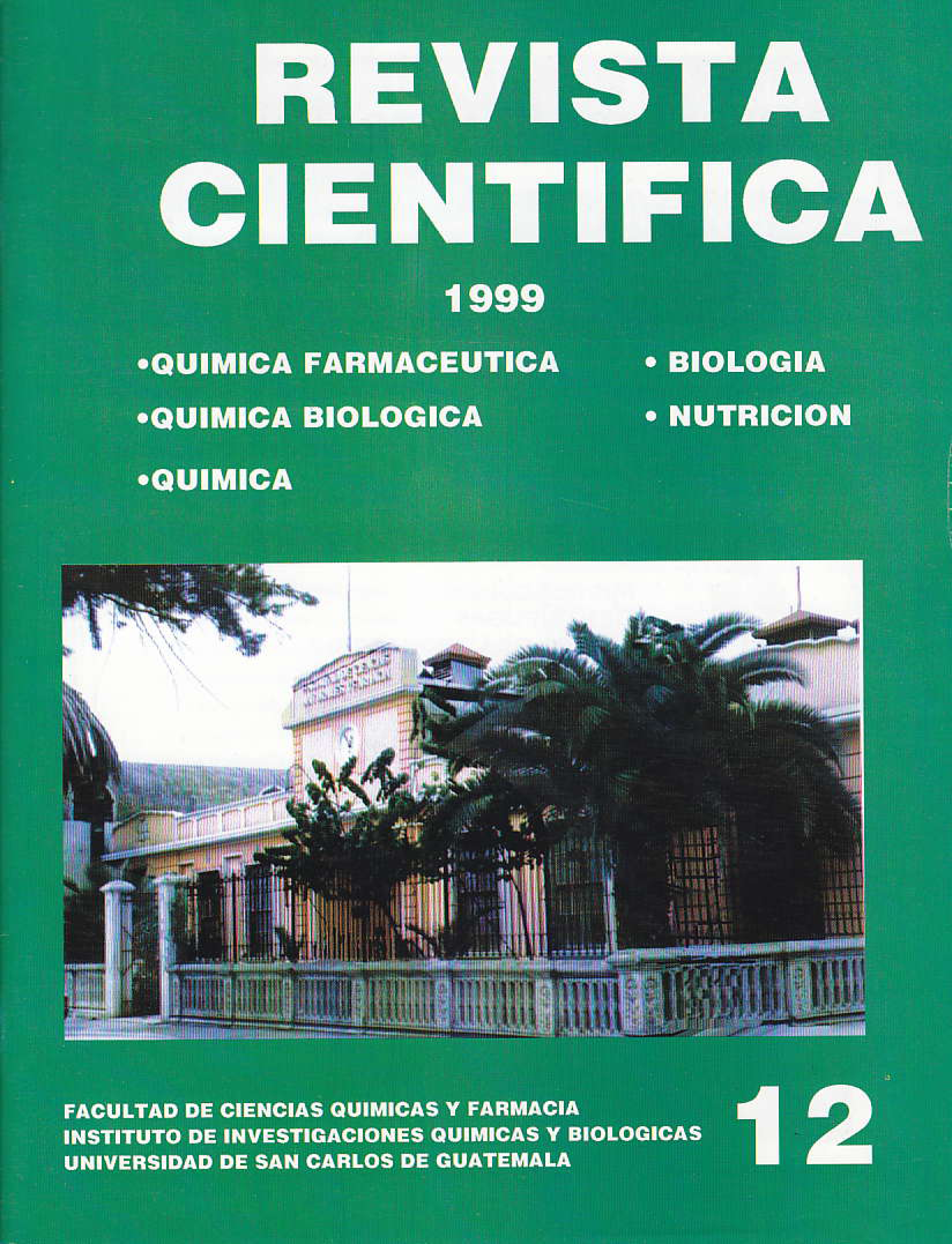Chemical composition of meat from wild animals for human consumption in the Uaxactun village, Peten
DOI:
https://doi.org/10.54495/Rev.Cientifica.v12i1.344Keywords:
chemical composition, meat from wild animals, human consumption, Uaxactun village, PetenAbstract
The present work was carried out with the purpose of determining the chemical composition, the frequency of consumption, the most consumed anatomical part and the preparation in which wild animal meats are most consumed. To determine consumption practices of wild animal meat, the focus group technique was used. It was determined that the consumption of this type of animals is very varied throughout the year, since hunting depends on climatic conditions, cultivation and harvest times of agricultural products, and extraction seasons of non-timber products. The wild animals that are most consumed in the village are: tepezcuintle, pheasant, wild boar, deer, goat, armadillo and cojoíita; the anatomical part consumed is the entire skeletal muscle; The viscera and intestines are food for the dogs that participate in the hunt. The ways of preparing wild animal meats are: marinated, sweated, roasted, smoked and fried. The proximal chemical analysis was carried out on meat samples prepared in the usual way for the village of Uaxactún, Peten; Protein, moisture, fat, cream, and total dry matter were determined in them. Energy and carbohydrates were calculated using mathematical formulas. Calcium, phosphorus, potassium, magnesium, manganese, iron, copper and zinc were quantified by atomic absorption spectrophotometry.Downloads
References
Análisis de Alimentos. Métodos oficiales y recomendados por ei Centro de Investigación y Control de Calidad. 1985, Madrid, Editorial de Servicio de Publicaciones Ministerio de Sanidad y Consumo. PP. 3-19.
Aurand, Leonard W. and Woods E, 1 987. Food composition and analysis. New York, Ed. AVI Book. PR 596-620.
Bateman, John V. 1970. Nutrición Animal. Manual de métodos analíticos. México Ed. Centro Regional de Ayuda Técnica, pp. 110,112,133, 146, 150. 195,219.
Bressani, Ricardo. 1976. “The Role of Small Animal Species in Nutrition and Food Production”, Bull.PAHO. Guatemala, 10 (4): 293-300.
Castañeda, Cesar Augusto. 1991. Interacción Naturaleza y Sociedad Guatemalteca, introducción a su conocimiento. Gua temala Editorial Universitaria,. (Colección Editorial Universitaria Vol. 85).
Crarley, Helen. 1989. Tecnología de Alimentos. Mexico, Ed. Limusa, Pp. 58-68, 520r 521, 530.
Dawson, 5., et. al. 1 994. A Manual for the use oí Focus Groups. USA., INFDC, PP. 96.
Delacourt, J. and Amadon D. 1973. Curassows and Related Birds. New York, Ed. The American museun of Natural History. pp.248.
Desroiser. Norman W. 1964. Conservación de Alimentos. Bolivia, 2da edición. Editorial Continental S.A., PP. 30-35.
Emmons, Louse R, 1990. Neotropical Rainforest Manuals. A field guide. Chicago, Ed. University of Chicago Press, pp. 158, 510,511.
Downloads
Published
How to Cite
Issue
Section
License
Copyright (c) 1999 Karla Cordón, Julieta Salazar de Ariza

This work is licensed under a Creative Commons Attribution 4.0 International License.
Authors who publish with this journal agree to the following terms:
- Authors retain copyright and grant the journal right of first publication with the work simultaneously licensed under a Creative Commons Attribution License 4.0 that allows others to share the work with an acknowledgement of the work's authorship and initial publication in this journal.
- Authors are able to enter into separate, additional contractual arrangements for the non-exclusive distribution of the journal's published version of the work (e.g., post it to an institutional repository or publish it in a book), with an acknowledgement of its initial publication in this journal.
- Authors are permitted and encouraged to post their work online (e.g., in institutional repositories or on their website) prior to and during the submission process, as it can lead to productive exchanges, as well as earlier and greater citation of published work.









